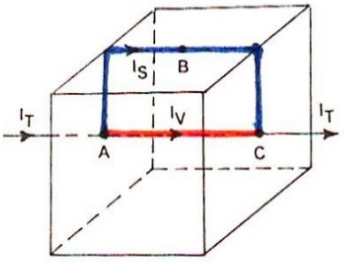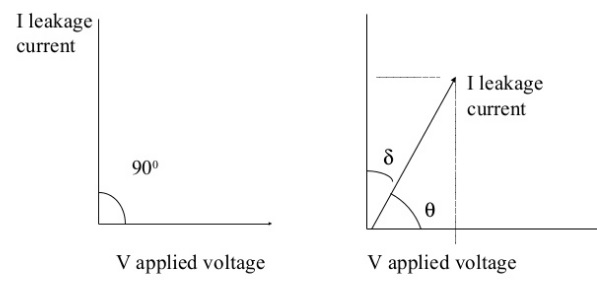Insulator Definition: Electric insulators are substances through which electric current cannot pass easily like glass, mica, dry air and Bakelite etc. Similarly materials which resist the transfer of heat are called thermal insulators like wood, glass wool, rubber etc.
The materials which have very high resistivity i.e. offers a very high resistance to the flow of electric current. Insulating materials play important part in various electrical and electronic circuits.
In domestic wiring insulating material protect us from shock and also prevent leakage of the current from wires. So insulation materials offer wide range of uses in electrical and electronics engineering applications.
Electrical Properties of Insulation Materials
Knowledge of various type of insulating materials is the most powerful tool in selection of right insulating material for proper use. Let us first talk about the properties of insulators which can be classified as under:
- Electrical properties
- Thermal properties
- Chemical properties
- Physical/Mechanical properties
Electrical Properties of Insulators
The properties of insulation materials are further classified in:
- Insulation resistance also called resistivity.
- Dielectric Strength aso called Breakdown Voltage
- Dielectric Constant
- Dielectric Loss

Insulation resistance of an insulation material is resistance offered to the flow of electric current through the material. Insulation resistance is of two types volume insulation resistance and surface insulation resistance.
The resistance offered to current Iv which flows through the material is called volume insulation resistance. For a cube of unit dimensions this is called volume resistivity. As from A to C. The resistance offered to current which flows over the surface of the insulating material is called surface insulation resistance. As from A to B and then B to C.
There are different factors that affect the resistance of an insulator i.e. temperature, moisture, applied voltage and ageing. If the temperature of the insulating material rises its insulation resistance keeps on falling. Similarly insulation resistance reduces if the material absorbs moisture, so this is very important that insulation material should be non hygroscopic. This is also to be noted that insulation resistance of an insulator decreases with the passage of time.
Dielectric Strength of Insulation Materials
Dielectric strength is the minimum voltage which if we apply to insulation material the result is destruction of its insulating properties. Electrical appliances/apparatus is designed to operate within a defined range of voltage. If we increase operating voltage gradually at some value of voltage, the breakdown of the insulating materials will occur.
The property which attributes to such type of break down is called the dielectric strength. Dielectric strength of mica is 80kV/mm. It means if the voltage applied across 1mm thick sheet of mica becomes 80kV mica will lose its insulating properties and current will start passing through mica sheet. In other words dielectric strength of an insulating material is the maximum potential gradient that the material can withstand without rupture.
There are many factors that affect the dielectric strength of an insulator i.e. it reduces as temperature of the insulating material is increased. Also absorption of the moisture by the insulation material reduces the dielectric strength of the insulators. If thickness of the insulating material increases the dielectric strength also increases. Ageing reduces the dielectric strength of the insulating material. Importantly to be noted that if frequency of the applied voltage increases the dielectric strength of the insulating material also increases.
Dielectric Constant of Insulators
The ratio of capacity of storing the electric charge by an insulation material to that of air is called dielectric constant of that material. It is to be noted that every insulating material has the property of storing electric charge ‘Q’ , when a voltage V is applied across it. The charge is proportional to the voltage applied i.e. QαV and we get Q=CV Where C is the capacitance of the capacitor which was formed by placing the material between the conductors across which voltage is applied.
The capacitance of the capacitor will change if the air between the plates of a capacitor is replaced by an insulating material acting as a dielectric. The property of insulating materials that causes the difference in the value of capacitance, physical dimensions remaining same, is called the dielectric constant or permittivity.
Dielectric Loss of Insulation Materials
Electrical energy absorbed by the insulating material and dissipated in the form of heat when an alternating voltage is applied across it is called dielectric loss. When a perfect insulation is subjected to alternating voltage it is like applying alternating voltage to a perfect capacitor. In such a case there is no consumption of power. Only vacuum and purified gases can approach this perfection. In such a case the charging current would lead the applied voltage by 90 degree exactly. This would mean that there is no power loss in the insulation.
But in most of the insulating materials, that is not the case. There is a definite amount of dissipation of energy when an insulator is subjected to alternating voltage. This dissipation of energy is called dielectric loss . In practice, the leakage current does not lead applied voltage by exactly 90 degree. The phase angle is always less than 90 degree. The complementary angle δ=90-θ is called dielectric loss angle.
There are many factors that affect the dielectric loss of an insulator i.e. temperature, moisture and voltage applied. With rise in temperature the dielectric loss also increases and presence of moisture in the insulator increases the dielectric loss in the insulator. Dielectric loss rises with rise in the applied voltage. This loss is one factor in limiting the operating voltage of underground cables generally to 100 kV.
Discover more from Electrical Engineering 123
Subscribe to get the latest posts sent to your email.


Pingback: sales jobs